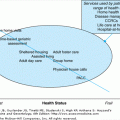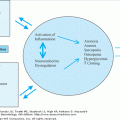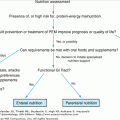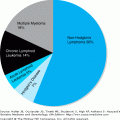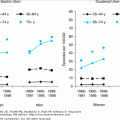Definitions
In the broadest context, elder mistreatment subsumes a variety of activities perpetrated upon an older person by others. Some proposed strategies for defining or classifying elder mistreatment have been based on the type of abuse (e.g., physical vs. verbal abuse), motive (e.g., intentional vs. unintentional neglect), perpetrator relationship (e.g., family vs. paid caregiver), and setting (e.g., community vs. nursing home). There is as yet no universally agreed definition or classification of elder mistreatment. Nonetheless, the clinician attempting to care for a victimized older person or to understand the spectrum of elder mistreatment will encounter several thematically similar definitions. For example, the older Americans Act of 1975 defines elder abuse as “the willful infliction of pain, injury, or mental anguish.” This definition has been adopted, and/or modified, by many state protective service agencies that investigate cases of abuse. A more recent and encompassing definition created by an expert panel convened by the National Academy of Sciences adopted the definition that elder mistreatment in all its forms involves a trusting relationship between an older person and another individual in which that trust is violated in some way. Table 60-1 lists other representative definitions and examples of elder mistreatment. Whatever definition is employed, a consistent and important feature of elder mistreatment, and other forms of family violence, is that multiple types of mistreatment, such as physical and verbal abuse, neglect, and financial exploitation frequently coexist in the same abuser–victim dyad.
MISTREATMENT CATEGORY | DEFINITION | EXAMPLES |
|---|---|---|
Physical abuse | Acts of violence that may result in pain, injury, impairment, or disease | ? Pushing, striking, slapping, force-feeding |
? Incorrect positioning | ||
? Improper use of restraints or medications | ||
? Sexual coercion or assault | ||
Neglect | The failure to provide the goods or services necessary for optimal functioning or to avoid harm | ? Withholding of health maintenance care |
? Failure to provide physical aids such as eyeglasses, hearing aids, false teeth | ||
? Failure to provide safety precautions | ||
Financial or material abuse | The misuse of the elderly person’s income or resources for the financial or personal gain of a caretaker or advisor | ? Denying the older person a home |
? Stealing money or possessions | ||
? Coercing the older person into signing contracts | ||
Psychological or verbal abuse | Conduct that causes mental anguish | ? Verbal berating, harassment, or intimidation |
? Threats of punishment or deprivation | ||
? Treating the older person like an infant | ||
? Isolating the older person from others | ||
Violation of a trusting relationship | Meant to encompass all forms of abuse in that all forms involve the older person relying on and trusting another party, who through acts of omission or commission, violates that trust, without regard to intent. |
Virtually all experts, clinicians, and reasonable laypersons will agree that egregious instances of physical violence such as punching, hitting, slapping, or assaulting an older person with a gun or other weapon are elder abuse. The most contentious definitional (and clinical) area relates to elder neglect, because the term neglect immediately implies that a caregiving obligation—such as providing food, medicines, or care—has not been met. This, in turn, raises difficult questions that must, with clinical judgment and experience, be considered in the context of the older adult’s environment. For example, what are reasonable community standards for the frequency of bathing an assaultive spouse with Alzheimer’s disease? Does that standard change if the designated caregiver also suffers from chronic diseases that preclude perfect hygiene for their impaired family member? What if this inadequate care enables the “victim” to live at home long after other families would have considered nursing home placement? Who exactly is the responsible caretaker, especially when multiple adult children are available to assume that role, but only one has “stepped up” because of birth order or some other arbitrary circumstance? And is it fair to label that adult child an “elder neglector” when caregiving becomes physically or psychologically impossible?
Epidemiology
However it is defined, elder mistreatment is common. Over the past 15 years, several prevalence studies have been conducted in different countries. These studies have used primarily self-report for case finding and validated family violence scales for case definition (typically an adopted version of the conflicts tactics scale, a common employed instrument used in all forms of family violence). The methodology assumes that all families have conflict, and that it is how that conflict is addressed or resolved that is the measurable and relevant aspect of mistreatment. Using this methodology, Pillemer and Finkelhor conducted the most commonly cited study in the United States. Surveying residents of metropolitan Boston by telephone, the investigators calculated a prevalence of 32 per 1000 population (i.e., 3.2% of the 2010 individuals surveyed reported having been victims of elder mistreatment at least once since turning age 65 years). In this study, cases of abuse exceeded cases of neglect. In the subsequent 20 years that have followed, most studies in western societies have produced a remarkably stable and similar prevalence in the 2% to 5% range. Recently, the World Health Organization has embarked on a coordinated series of studies addressing prevalence and screening across several countries. This effort indicates growing worldwide interest in elder abuse.
A less-consistent epidemiologic picture emerges when one attempts to discern risk factors for elder mistreatment from the literature (Table 60-2). The most consistent findings relate to the relationship of the abuser to victim; most studies report that spouses and adult children are the most common perpetrators. Studies also show that when adult children are the abusers, sons and daughters are often equally implicated. At least one study found daughters to be the more common abuser. These findings must be viewed cautiously in that women are far more likely to be the de facto or designated care providers to frail older adults and are, therefore, more “at risk” for being accused of mistreatment should caregiving fall short of any arbitrary standard.
FACTOR | MECHANISM |
|---|---|
Victim’s poor health and functional disability | Disability reduces elder’s ability to seek help and/or defend self. |
Cognitive impairment | Aggression toward caregiver and disruptive behaviors resulting from dementia precipitate abuse. Higher rates of abuse have been found among patients with dementia. |
Abuser deviance | Abusers likely to abuse alcohol or drugs and to have serious mental illness, which, in turn, leads to abusive behavior. |
Abuser dependency | Abusers are very likely to depend on the victim financially, for housing, and in other areas. Abuse results from relative’s (especially adult children’s) attempts to obtain resources from the elder. |
Living arrangement | Abuse much less likely among elders living alone. A shared living situation provides greater opportunities for tension and conflict that generally precede abusive incidents. |
External stress | Stressful life events and chronic financial strain decrease the family’s resistance and increase likelihood of abuse. |
Social isolation | Elders with fewer social contacts more likely to be victims. |
Isolation reduces the likelihood that abuse will be detected and stopped. In addition, social support can buffer against the impact of stress. | |
History of violence | Particularly among spouses, prior history of violence in the relationship may be predictive of elder abuse in later life. |
The most discordant literature is in the area of victim risk factors. Here the literature has produced inconsistent findings with respect to gender, functional disability, cognitive impairment, social network, and a variety of other factors proffered by elder abuse theorists. A particularly contentious area has been spawned by the “dependency theory” of mistreatment, which holds that mistreatment occurs when the victim becomes inordinately dependent upon the caregiver for a variety of medical and nonmedical needs. Again, studies show an inconsistent relationship between functional disability and elder mistreatment. In fact, a more consistent finding in the literature is the converse—the perpetrators are often dependent upon the victims for financial support and housing. Characteristically, an adult child unable to achieve independence is reliant on the older person for these needs.
The disparate findings probably derive from two major factors. The first is the methodologic quality of the studies, which have been highly variable and rife with susceptibility and other biases. The second relates to the heterogeneous nature of elder abuse cases. Elderly protective services workers and clinicians experienced in elder mistreatment know that the term elder mistreatment subsumes many situations—abusive spousal relationships that have “aged,” caregivers to dementia patients who lash out in frustration, and physically abusive adult children with poorly managed mental health or substance abuse problems, are but a few examples. Epidemiologic studies that attempt to discern risk factors without acknowledging this reality probably are measuring an “average” effect, thus possibly missing important sets of risk factors among subgroups of abused or neglected elderly populations.
Whatever risk factors are identified in previous and future research should not foster a complacency wherein an absence or paucity of such factors causes the clinician to lower his or her guard. Elder mistreatment crosses all ethnic and socioeconomic boundaries. A high index of clinical suspicion is paramount for identification.
Pathophysiology
Theories of elder mistreatment abound; three deserve detailed treatment here, because they may have clinical relevance with regard to the types of interventions contemplated in confirmed cases of mistreatment. The most commonly cited theory contends that family violence is a learned behavior; abused children grow up to potentially abuse not only their children, but also perhaps spouses and their parents. This is sometimes referred to as the transgenerational violence theory of mistreatment.
